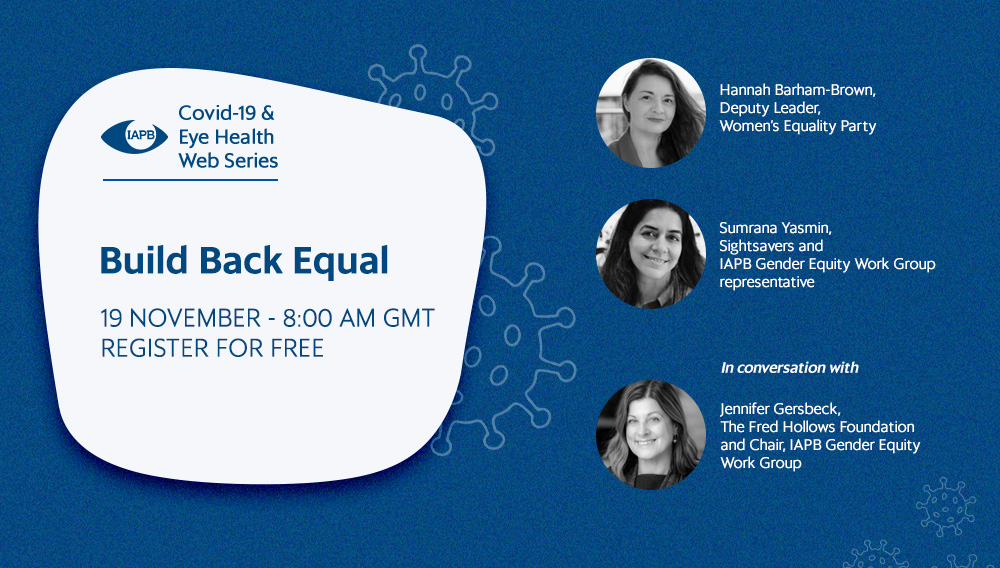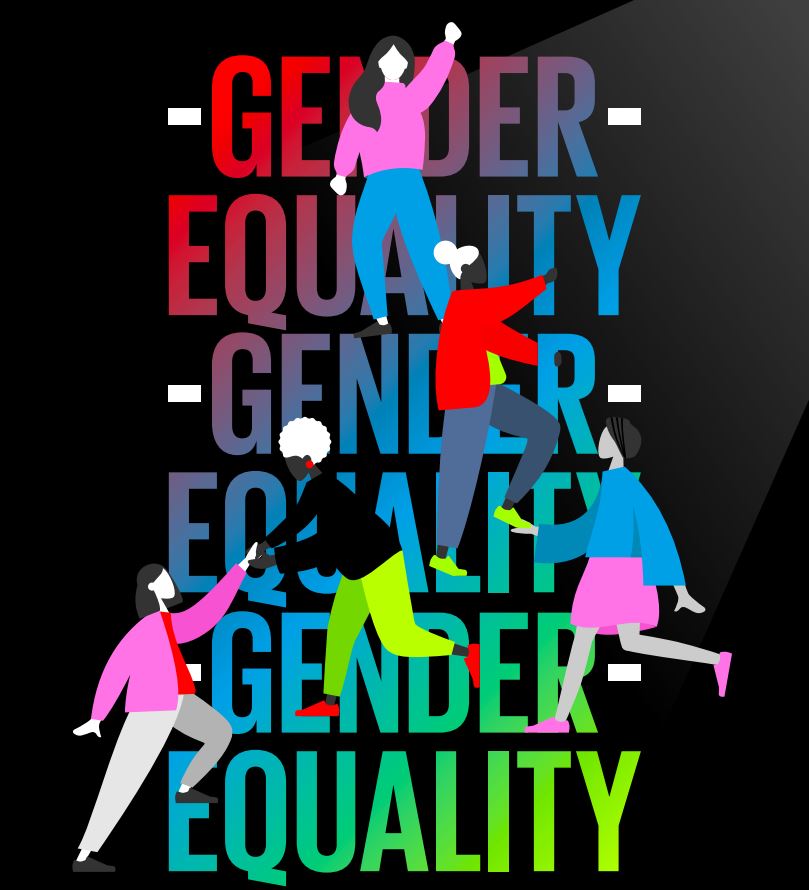Join a powerful, unprecedented alliance for better eye health for all.
Join IAPBWith the global pandemic of COVID-19 impacting communities, countries and regions around the globe, the way forward for health care ought to look and be different.
Women play a critical role in the advancement of global health, both in formal roles and informally within their families and communities, but men continue to hold most leadership positions. Women make up 701, percent of the global healthcare workforce, yet occupy less than 25 percent of the most leadership positions.
This pandemic has shed light on the growing inequities and problems of how health care is currently being led and who is making critical decisions.
Shortly after COVID-19 was declared a pandemic, United Nations Secretary General António Guterres urged governments to put women and girls at the centre of their efforts2.
“That starts with women as leaders, with equal representation and decision-making power…Gender equality and women’s rights are essential to getting through this pandemic together, to recovering faster, and to building a better future for everyone.” – António Guterres
Within the global eye care sector, stakeholders at every level have a role to play in paving the path for a more equitable future in how people access services, how they are delivered, by whom, and who is planning and making decisions around such activities and resource distribution.

The IAPB Gender Equity workgroup hosted a webinar in November 2020 ‘#BuildBackEqual’ featuring voices that continued to highlight what the evidence backs up. A key take away was shared from a recent WHO report: that it is “women who deliver global health and yet men lead it. Health systems will be stronger when the women who deliver them have an equal say in the design in national health plans, policies and systems.” Women doing the work need to be present when decisions are being made and issues are being discussed. Women need to be empowered to lead these critical conversations. Their voices need to be heard and listened to, as well and acknowledged.
It is vital also that intersectionality—the way that different factors such as disability, race, class, gender, and other identities combine to affect lived experiences differently—is regarded as well in such spaces. It is not enough to ensure that women have a seat, but that such spaces and seats should be made up of range of identities that allow a more collaborative discussion to commence.
#BuildBackEqual highlighted the unique opportunity that COVID-19 has presented the world to be intentional and inclusive when responding and re-building our systems. In the eye health community, this means breaking down silos and working with other sectors to understand lessons learned and integrate them into our systems and work moving forward. It means choosing to integrate gender proactively and intentionally. It means listening to the voices of women who are doing the work and ensuring that there is access to leadership opportunities at every level within our organizations, systems, and structures. It means change is required to ensure we do things different moving forward.

At the Generation Equality Forum in July 2021, a new report ‘Gender equality: Women’s rights in review 25 years after Beijing’ was launched. It marks the 25th anniversary of the adoption of the Beijing Platform for Action, as well as the first time that progress has been reviewed in light of the 2030 Agenda for Sustainable Development. This report takes an integrated approach to reporting on progress, gaps, and challenges related to the advancement of gender equality and women’s rights. To ensure that progress is accelerated and achieved across all these themes, the report calls for four catalysts for change:
In eye health we know that a first major step is to support and give women at all levels access to decision-making opportunities works to ensure everyone is included. The way forward ought to look and be different because COVID has taught us all a valuable, costing lesson. Working the same way will not work- we need to do things differently to have different, lasting impacts.
Sightsavers have provided their guidance document on relaunching inclusive education and school-based vision screening programmes after COVID-19 pandemic closures.
[1] UN Women | Explainer: How COVID-19 impacts women and girls
[2] https://www.unwomen.org/en/news/stories/2020/4/statement-sg-put-women-and-girls-at-the-centre-of-efforts-to-recover-from-covid19